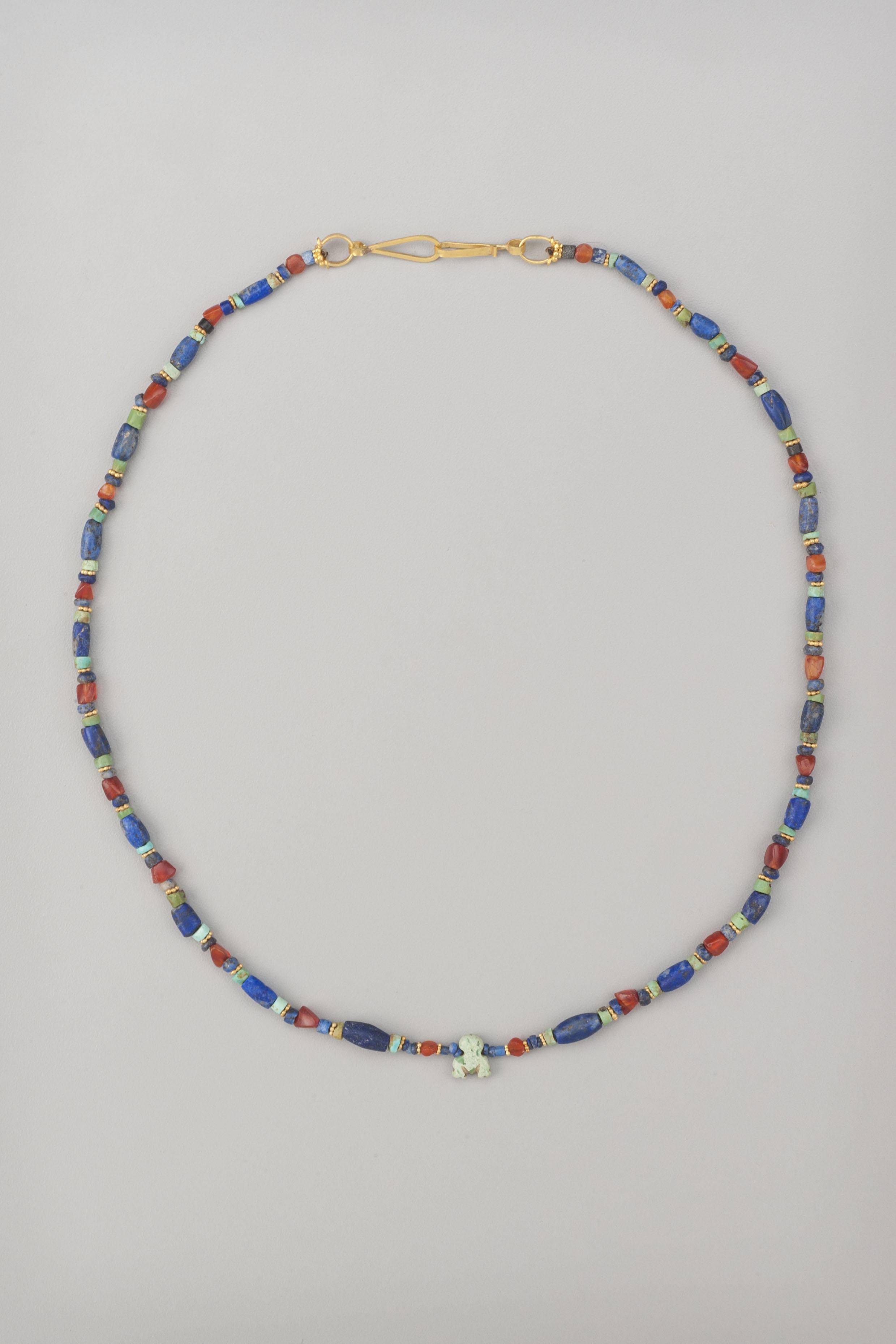Ancient Carnelian, Turquoise, and Lapis Necklace with Turquoise Triratna
Collection:
Swat Valley
Material:
Lapis Lazuli, Turquoise, Carnelian, 24k gold
Size:
The necklace is 20 ˝ inches (52 cm) in length. The necklace weighs 16.2 gm.
Price:
$2,900.00
A necklace of twenty lapis lazuli barrel beads, each faced with two turquoise disc beads, and twenty-two carnelian beads with four triangular faces, each faced with two lapis lazuli disc beads. Each of these groups of three beads are separated with a 20k granulated gold bead. There are forty-four of these gold beads, forty-four of the lapis disc beads and forty of the turquoise disc beads. There is a turquoise pendant bead at the apex of the necklace in the form of a Tri-ratna. The turquoise pendant bead is 9.3 mm in height, 8 mm in width, and 3.5 mm in thickness. The drill hole diameter is 1/5 mm. The lapis lazuli barrel beads graduate in size slightly from the front to the back of the necklace. The largest one are 1 cm in length, 5 mm in thickness at the center, 3.5 cm in width at the ends, and having a drill diameter of 2 mm. The smallest are 6.5 mm in length, 3.5 mm in width, and with a drill hole of 1.8 mm. The largest of the carnelian beads are 5 mm in length, 4.5 mm in width on one end tapering down to 2 mm on the other. The smallest of these is 4 mm in length, 3.3 mm in width on one end and 1.3 mm on the other. The drill holes are 1mm. There are a pair of tabular carnelian beads on either side of the pendant and also a pair at the back. These are 3.5 mm in diameter and 2 mm in thickness, with hole diameters of 1 mm. The turquoise disc beads are 2 m in length and 3.5 mm – 4.5 mm in width. The lapis disc beads are slightly smaller, 2 mm in length and 3.5 mm in width. Drill hole diameters are 1mm. The Tri-ratna ( “three jewels”) pendant is considered to be a Buddhist symbol and was probably used as such two thousand years ago when these beads were made. It is often seen on ancient coins and on pillars and gateways in association with two other symbols that have been linked to Buddhism, the Wheel of the Law,( a wheel with eight spokes), and the Svastika. The Svastika and the Tri-ratna are very ancient symbols that can be found on coins from Taxila, from the Harappan civilization dating to four thousand years ago. As this predates Buddhism, it seems that the symbols were appropriated as they were already in long use and considered to be sacred. The designation “Tri-ratna” is itself a modern appellation. Western scholars in the eighteenth century associated the three pronged shape with the three jewels, the objects of refuge, the Buddha, Dharma, and the Sangha. Whether or not the form was seen as “the three jewels” two thousand years ago, it was certainly associated with Buddhism and was probably felt to a sacred sign and therefore have protective powers. The granulated beading tips and hook and eye clasp are 24k gold.
